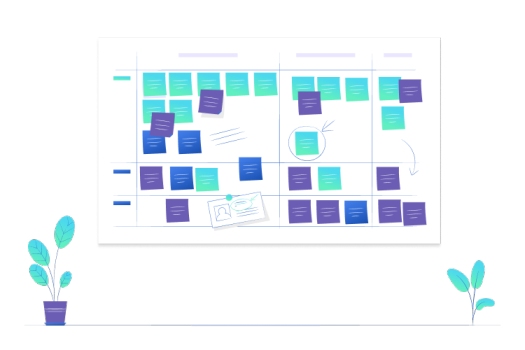Table of Contents
The Power of Agile: Why It’s Important to Your Business
The Power of Agile: Why It’s Important to Your Business. In today’s fast-paced environment and increasingly digital business world. Organizations that can adapt and respond to market shifts quickly are seeing considerable advantages over their slower-moving competitors. In other words, businesses must now operate in an Agile manner or risk being left behind.
What is Agile and How Does it Help Businesses?
Let’s take a look at the many benefits of Agile and its role in today’s business world.
The word “Agile” has been thrown around a lot lately, especially in the software development world. You might wonder what exactly it means for your business or even if it applies to you at all. The good news is that regardless of whether you operate as a sole proprietorship or have an entire department dedicated to operations and IT, agile is applicable and beneficial to everyone!
Let’s find out some of the best benefits of agile to get a competitive edge for your business.

What is Agile?
- Agile is a set of core principles that have helped businesses become more adaptive, efficient, and effective. The focus of Agile is on the customers’ needs and requirements and serving them efficiently.
- Its guiding principles include iterative work, continuous feedback, collaboration, and clear goals. The main idea behind Agile is that businesses need to be able to quickly respond to changes in the market. It also adjust their products and services as needed. The Agile philosophy focuses on speed, flexibility, and continuous improvement.
- Agile can be applied to many different areas of business. It’s most commonly used in software development, product management, and marketing. It’s also used in other areas, such as architecture and consulting.
Here’s a tip of how agile the approach actually looks!

Frequent small gradual improvements and periodic reviews reduce implementation dangers. It makes it much easier to terminate non-profitable investments before they cause significant losses. It is critical to have the ability to change and re-prioritize tasks in a preliminary phase.
Organizations are beginning to implement agile methods of working throughout their companies. After seeing the benefits delivered within the IT dept.
The most effective agile teams are those that take the chance to understand a structured agile methodology. To achieve the best business results, conventional methods, discipline, and versatility. Those must be combined to provide a straightforward, dependable, and agile approach.
The attitude of “we don’t organize, we’re agile” is likely to cause a project to lose focus and eventually fail.
A certain amount of formality and making preparations is required–if agile development gives up all project discipline. It is unlikely to generate a faster time to market, reduced costs, decreased risk, and increased flexibility.
Benefits of Agile for your business – Let’s find out!
It offers immense speed and flexibility
One of the primary advantages of working in an Agile environment is the increased speed of your day-to-day tasks. Rather than waiting for a project to be completed before beginning work on the next, teams release smaller. But more frequent chunks of work for a faster time to market.
This enables them to get feedback on their products much earlier in the process and adjust their strategy if necessary. The result is that products can hit the market faster and customers are able to access them sooner, resulting in a fast-mover advantage.
This is especially important in fast-moving markets like technology, where new solutions introduced regularly and customers often want the latest and trendy end products as soon as possible.
Agile teams are also more likely to be able to respond to changes in the market as per their changing customer preferences. This might include new regulations, updated industry standards, or an entirely new product direction if necessary.
Reduced risk with fast-turnaround releases
The ability of Agile teams to quickly release smaller chunks of work. Means they can test different versions of their product with customers.
This allows them to receive feedback on multiple versions of their product. Which is useful for determining which product to keep and which one should be discarded. While this testing might seem like a risk to some businesses. It actually provides a number of advantages in the long run.
First, customers who try the product and provide feedback are less likely to write a negative review or publish negative feedback on social media.
This reduces the risk of receiving bad publicity or damaging your company’s reputation. This feedback can also be used to improve the product. Which is a key role of product managers and results in a better future outcome.
They help determine which features should be included in the product. Which one’s need improvement, and which ones should be removed altogether.
Continuous improvement through constant feedback from internal & external sources
Collecting feedback from customers is important for any company. But in an Agile environment, you should be actively seeking feedback from a wide range of sources.
Within your company, teams should communicate regularly and share their feedback and other related data. This is important for continuous improvement because sudden changes in the market or customer preferences might require changes to your product or your strategy as well.
This could be a change in the marketing strategy that could negatively affect your product or the need to integrate new technology into your solution.
Therefore, to respond to these changes, internal teams must communicate with product managers and marketing to stay on top of any issues that will benefit the company drastically.
Powerful tools & technologies to level up your talent game
Companies must adopt the appropriate tools and techniques to equip today’s workforce.
They should prioritize the implementation of knowledge-sharing tools that enable cooperation among in-office, hybrid, and remote employees, as well as the use of portals that provide a clear picture of the combination of permanent and conditional talent throughout their organization.
Companies are able to best reflect trend lines around worker retention and workplace productivity if business intelligence tools are instated, as most of the businesses that have embraced such technologies say that staff members have well received them.
Such knowledge-sharing tool execution can nurture effective coordination among hybrid, remote, and in-office staff.
Any business’s ability to attract and retain talent is critical to its success. Companies will end up losing their competitive edge and business success if they are not agile enough to adjust their talent game.
Simplified hierarchy in the business operations
A key tenet of Agile is collaboration across teams, departments, and even geographies where appropriate.
Many agencies have overly complex systems with too many tiers that complicate business tasks, as well as a culture marked by a sense of failure and reluctance to change. To get the most out of the agile model and reap its many benefits, you must get started right away.
Even though leadership has a substantial impact on culture, management requires a complete plan for managing business requirements, relieving the fear of change, inspiring encouragement, and promoting the skills and behaviors required for being agile.
A future-oriented company acknowledges the changes occurring between the corporation, its employees, and its clients and can cope with continuous change by creating adaptable, agile, and fragmented surroundings.
Alignment in every business activity!
Another important reason for organizations to adopt an agile approach is alignment.
Alignment occurs when we structured in functional areas, when our team members structured around product lines or other company operations, and when our technology infrastructure operated in more than one location. Alignment is an interconnection between all the business activities – both internal & external, which results in consistent and desired results.
The trick is to determine how to align the organization when the simple pattern breaks down. The agile approach makes it possible by seamlessly managing employees, products, services, customers, and everything in between.
Agile implies the formation of cross-functional team members to support products and attract clients. This is a simple expression of alignment, and people get it… they want to have it. People do not typically request ‘alignment,’ but they prefer a link between effort and actual business outcomes.
Conclusion
Companies are presently at an intersection where they can either carry on as usual or reshape themselves from within.
Using an agile approach to problem-solving encourages technological improvements. It enables the company to become disruptive industry leaders, impacting the fate of their respective industries.
Nowadays, significant international companies such as Uber, Tinder, Facebook, Amazon, Google, Netflix, and Tata rely on cutting-edge, adaptable IT infrastructure with an agile model to continue expanding and hooking customers; this is exactly what you should do as well.



